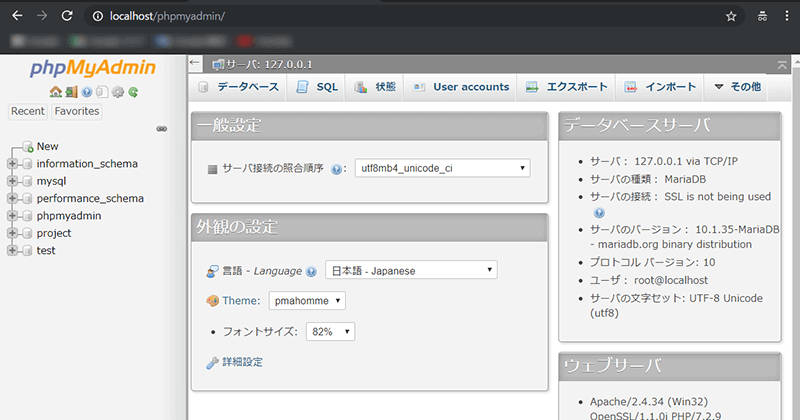

- #MARIADB ROOT PASSWORD INSTALL#
- #MARIADB ROOT PASSWORD UPDATE#
- #MARIADB ROOT PASSWORD UPGRADE#
- #MARIADB ROOT PASSWORD FULL#
MariaDB configuration options are read from the following files in the given order (according to mysqld -help -verbose | tail -20 output):Ĭreate a configuration file in /etc/my.cnf.d/ with a. MariaDB> GRANT ALL PRIVILEGES ON mydb.* TO quit # mariadb -u root -p MariaDB> CREATE USER IDENTIFIED BY 'some_pass'
#MARIADB ROOT PASSWORD FULL#
In the below example, the user monty with some_pass as password is being created, then granted full permissions to the database mydb: To log in as root on the MariaDB server, use the following command:Ĭreating a new user takes two steps: create the user grant privileges. Once you have started the MariaDB server and added a root account, you may want to change the default configuration.
#MARIADB ROOT PASSWORD INSTALL#
To simplify administration, you might want to install a front-end.
#MARIADB ROOT PASSWORD UPGRADE#
This has the nice side effect that, when it happens, you can login to the SQL server without having to restart MariaDB with -skip-grant-tables: just log-in to the system's root account, then just connect with mysql -u root without password, then reset the plugin field in the way it is explained above.ĮDIT 2: Confirmed, it happens on each MariaDB upgrade on Ubuntu.Note: Before continuing, it is recommended to improve the initial security of MariaDB installation. The only thing I can't explain is why the UNIX_SOCKET plugin is regularly set on each account of the database, without any action on my side. So you can safely disable it if you don't use unix socket as a logging-in method. In fact, this plugin is an authentication plugin and not a method of communication with the SQL server. So I've got a better comprehension of the probem there's an UNIX_SOCKET plugin that can let you log in a MariaDB account without having to create a password, because it uses the shell's credentials to trust you, without having to enter any password.
#MARIADB ROOT PASSWORD UPDATE#
After my MySQL va repaired, in PMA, I can see that the connection is established through an Unix socket.ĮDIT, some months later: I'm now used to have this problem come back frequently, I think at each update of MariaDB (or something like that). This will not necessarily disable the connection via Unix socket.

Then, restart MySQL in normal mode and you should be able to connect to the root account. Privileges parameters need to be saved explicitly: FLUSH PRIVILEGES If not, update it with: UPDATE user SET password=PASSWORD("my_password") WHERE user="root" UPDATE user SET plugin="" // without WHERE clauseĪlso, make sure that a password is defined, because sometimes it seems to be erased (select on user, password fields). I had to reset the plugin field of each entry to a blank string. Look at the plugin field into the er table: MariaDB > SELECT user, plugin FROM user (not necessary at all, read my edits at the end of the post) Reboot MySQL/MariaDB using -skip-grant-tables (search for tutorials on the web). MariaDB > sudo service mysql mysql -uroot -pnewPassĮRROR 1698 (28000): Access denied for user have found a solution that is as strange as the problem itself. MariaDB > update user set password=PASSWORD("newPass") where user='root' Type '\c' to clear the current input statement. Server version: 10.0.20-MariaDB-0ubuntu0.15.04.1 (Ubuntu)Ĭopyright (c) 2000, 2015, Oracle, MariaDB Corporation Ab and others. + Terminé 1 sudo mysqld_safe mysql -u root Remove all -log-error configuration options for -syslog to take effect.ġ50802 19:07:25 mysqld_safe Logging to '/var/log/mysql/error.log'.ġ50802 19:07:25 mysqld_safe A mysqld process already exists 150802 19:07:25 mysqld_safe Can't log to error log and syslog at the same time. See that: sudo mysqld_safe -skip-grant-tables & I tried the usual method to reset the root password (skip grant tables mounting and reset the passord) but it seems it doesn't works. I tried via a terminal, same problem, and it is because my password is wrong. It said: "Cannot log in to the MySQL server". Today, I wanted to create a database in PMA.


 0 kommentar(er)
0 kommentar(er)
